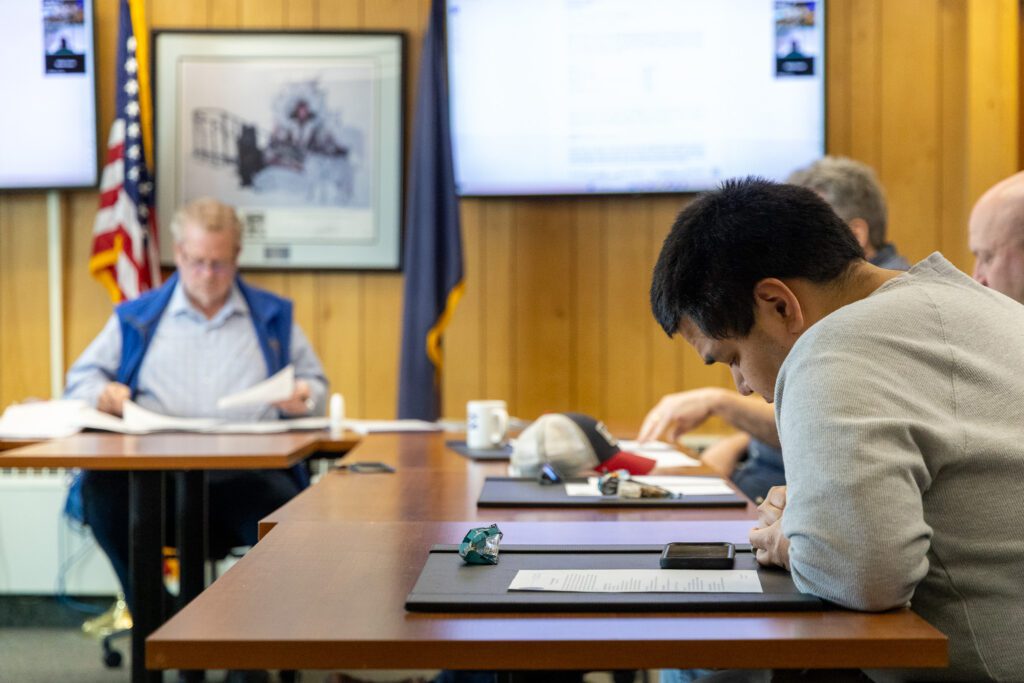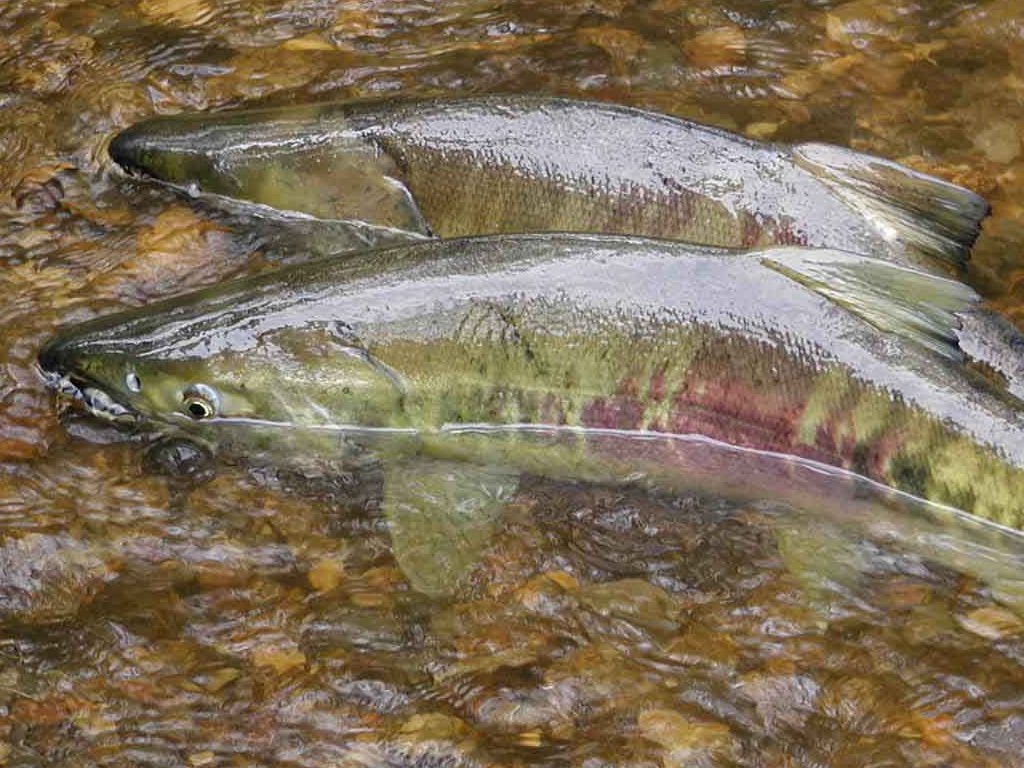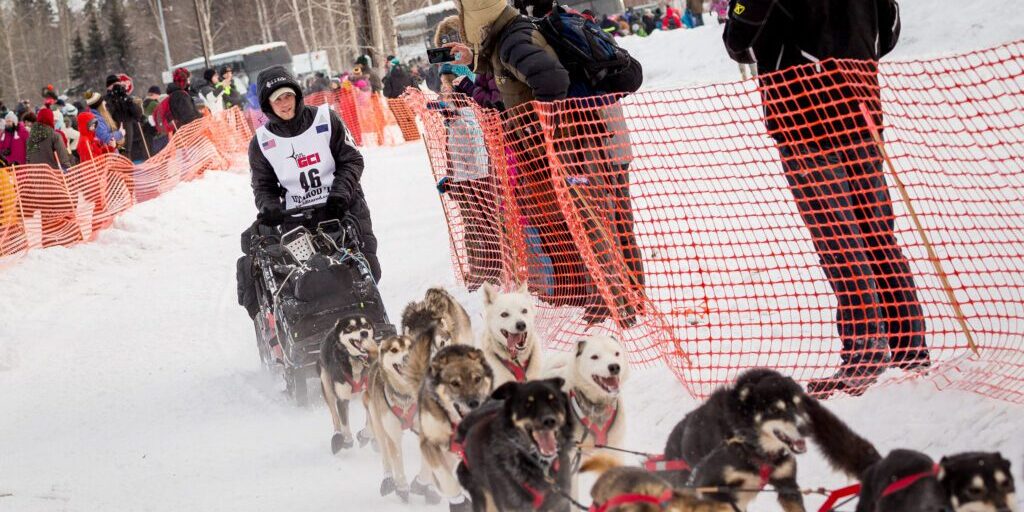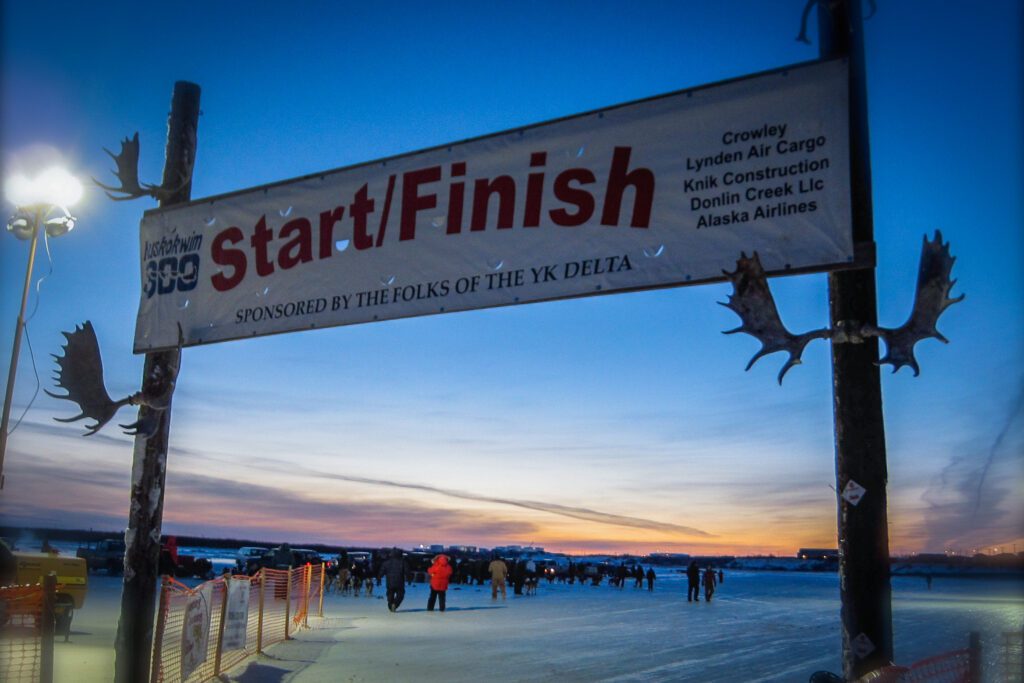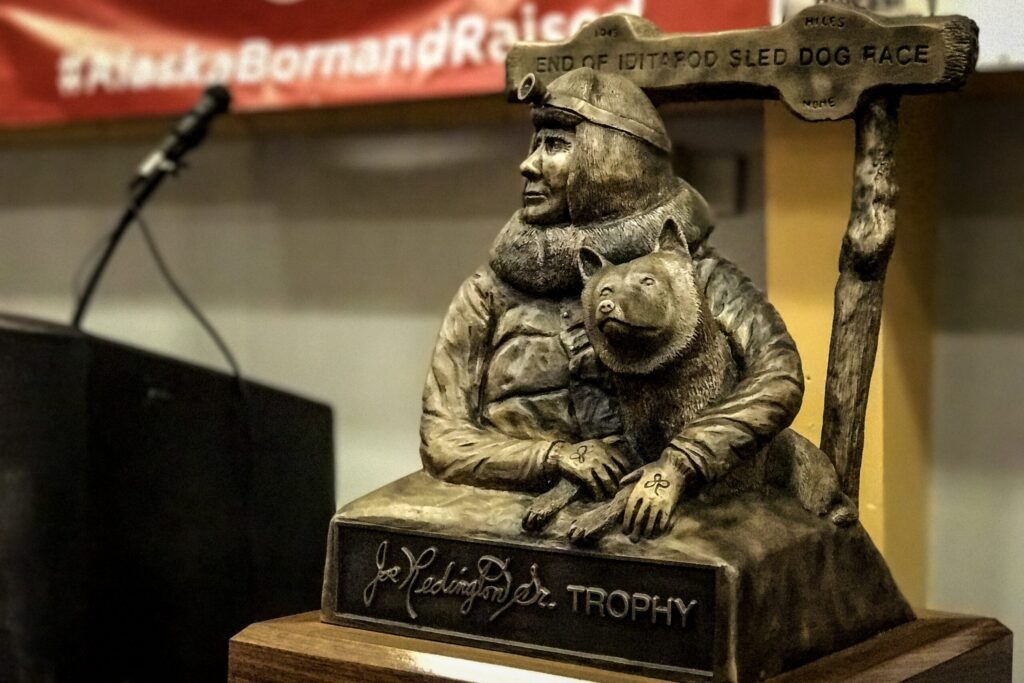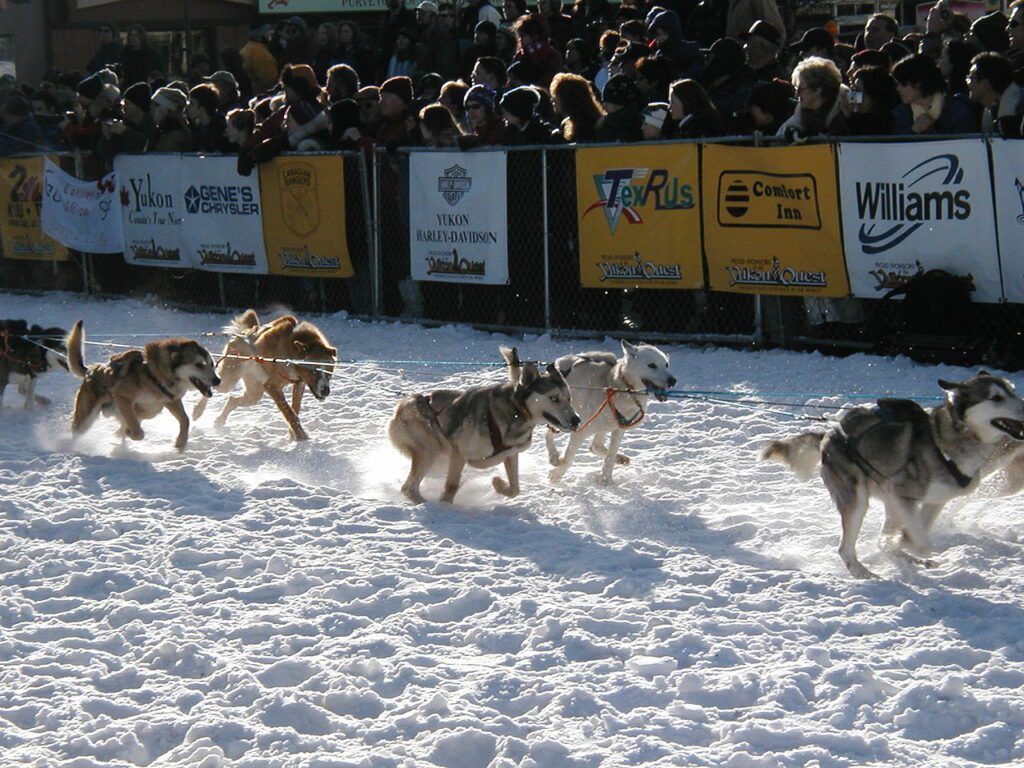72 mushers hit the trail today in the 45th running of the Iditarod Trail Sled Dog Race. Dog teams will face frigid temperatures and the potential for slow, snowy trails when they begin the race on the banks of Chena River in Fairbanks.
Audio PlayerThe chorus of more than a thousand sled dogs, clicking cameras, and news helicopters above downtown Anchorage is a world away from the frozen interior rivers of this year’s Iditarod trail. Or technically, 360 miles by dog truck.
“We’ll probably stop once for them to get out to get wiggles out and go potty.”
That’s Knik musher Melissa Stewart, who made the trip from Anchorage, where the weather was crisp, but mild compared to Fairbanks. Temperatures overnight there and on into Tuesday are projected to be 30 below. For musher Jason Mackey, who has been training this season out of Nenana, driving north into subzero temperatures is getting back to his kennel’s routine.
“The dogs are acclimated to them temperatures up there. As of last night, it was 35 below. We’re used to that. We’ve got the best gear. We’ve got the best of everything for them conditions which we’ve never had before. It’s all good.”
Bethel musher Pete Kaiser won this year’s Kuskokwim 300 as temperatures dropped to 45 degrees below zero. Racing his 8th Iditarod, Kaiser says keeping his team of huskies performing at a top level takes diligence.
“You gotta be a little more on top of the type of food they’re getting. Of course, they’re burning more calories when it’s colder, you’re trying to get more calories into the dogs and yourself, layering your clothes correctly so you’re not too cold and can take good care of the dogs, coats on the dogs — it makes everything a little more difficult.”
Poor snow conditions in the Alaska Range earlier this winter forced race organizers to move the race start to Fairbanks for the third time in 45 years of racing. Mushers now will face the opposite problem on the Chena and Tanana Rivers.
Snowfall is nearly two feet above normal, according to the National Weather Service. The current snowpack is highest Fairbanks has seen since 1993, the year that Denali musher Jeff King won the first of his four titles. King, who will be 33rd out of the chute Monday, says narrower trails can throw a wrench in the plan of those who drew a later starting position.
“I’ll be less interested in being in the back of the pack the first 48 hours than normal. Because I don’t expect the passing to be good, I think some people will lose [an] hour or two in poor passing conditions or more getting stuck behind a slower team. And I don’t want to be there.”
And while the Tanana and Yukon Rivers lack the drama of descending through Dalzell Gorge or Happy River steps on a typical Iditarod, Noah Burmeister says mushers should not expect a boring trail in the country where he trains.
“It will be a freshly put-in trail, so it will be soft and slow going. But there’s a lot of technical running between Nenana and Manley, going in and out of portages and through trees and tight corners and turns and everything else. And there could be some areas where there’s overflow.”
Part of two-time champion Mitch Seavey’s strategy is keeping his team running at a measured pace for the first several hundred miles to preserve speed for a race up the coast. He says it’s easier to keep this so-called “speed limit” when the trail has some resistance:
“And that’s what we’re sort of hoping for, if there is some soft snow and something to kind of slow them down. Otherwise, we’re standing on the drag and slowing them down mechanically. I think we have a speed limit trained into the team, they don’t necessarily obey it, but they understand it when I limit them. That’s something we’re hoping to carry out this year, regardless of trail conditions. “
Two new rules are in effect this year. One allows mushers to carry and use two way communication devices, like cell phones and satellite phones. The controversial rule arose as a way to address safety on the trail after Jeff King and Aliy Zirkle were attacked by a man driving a snow machine during the 2016 race. Another rule says mushers must carry dogs in the front of their sled and not in the pull-behind trailers that have gained in popularity in recent years.
The field is among the most competitive ever and includes the entire top ten from 2016 and five past champions. 17 rookies will be on the trail, racing their dogs 60 miles to Nenana, the start of the 1925 serum run and the first checkpoint in this year’s race to Nome.

